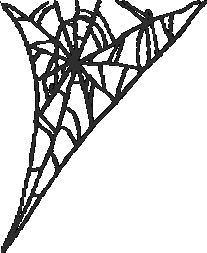| Death Traditions: 50,000 Years Ago, Western Asia The earliest evidence of a funeral tradition has been traced to Western Asia's Neanderthal man, a member of our own classification, Homo sapiens. Illustrations often depict the Nean derthal as a primitive creature with a heavy brow, thick, large nose, and brutish expression. Actually, many Neanderthals possessed classic European features and fair, hairless skin. From unearthed skulls, archaeologists calculate that Neanderthals had a brain capacity equivalent to our own. Neanderthals began the practice of burying their dead with ritual funerals. They interred the deceased's body, along with food, hunting weapons, and fire charcoals, and strewed the corpse with an assortment of flowers. A Neanderthal grave discovered in Shanidari, Iraq, contained the pollen of eight different flowers. Even fifty thousand years ago, man associated fire with funerals, for there is evidence of torches at Neanderthal gravesites, though their meaning remains unknown. Much later, the ancient Romans believed that flaming funeral torches guided the departed soul to its eternal abode; our word "funeral'" derives from the Latin funus, "torch". In addition to the word "funeral", the Romans gave us the modern practice of candles ata death services. Lighted candles around the body supposedly frightened away spirits eager to reanimate the corpse and take possession of it. Since the spirits' domain was darkness, they were thought to shun light. As we are about to see, it was fear of the spirit world, more than respect for the beloved deceased, that served as the origin for most of our modern death traditions. |
 |
| Black for Mourning We say wear black to a funeral as a sign of respect for the deceased. But it was fear of a dead relataive, foe, or stranger that formalized black as the standard color of mourning in the Western wolrd. The custom is ancient. Early men believed that without continual vigilance, the spirit of the dead reentered and possessed the body of the living. Anthropological evidence suggests that primitive white men painted their bodies black at funerals to disguise themselves from spirits. And there is more recent proof, in this century and the last, of black African tribes coating their bodies the opposite color, chalk white, to evade recognition and possession by the recently deceased. Extrapolating from black body paint, anthropologists arrive at black funeral attire----which in many societies was worn by the closest relatives of the deceased for weeks or months as protective camouflage. The veil covering a mourner's face originated from this fear. In Mediterranean countries, a widow wore a veil and black clothing for a full year to hide from her husband's prowling spirit. There is, after all, nothing intrinsically respectful about the color black, but for a white-skinned person it is the antithetical mask. |
| Coffin Our word "coffin' comes from the Greek kophinos, meaning "basket". It was in baskets woven of plaited twgs that the ancient Sumerians, about 4000 B.C., interred their dead. But again, it was fear of the deceased that accounted for the origin of a coffin in the first place. In Nothern Europe, drastic measures served to prevent the dead from haunting the living. Frequently, a dead man's body was bound and his feet and head were amputated. To further handicap him, en route to the gravesite a circuitous course was followed so he could not retrace the path to his former home. In many cultures, the dead were carted from the house not through the once-familiar front door, but via a hole in the wall cut out for the occasion and closed up immediately afterward. While burial six feet underground was viewed as a good precaution, entombment firts in a wooden coffin was even safer. Nailing down the lid afforded additional protection. Not only were many early coffins secured with numerous nails (far too many, archaeologists contend, merely to prevent a lid from sliding off during a procession), but once the coffin was lowered into the ground, a large, heavy stone was placed atop the lid before soil was shoveled in. A larger stone topped off the closed grave, giving birht to the practice of the tombstone. Later in history, of course, relatives affectionately inscribe a family member's tombstone and respectfully visited the gravesite. But before these civilities arose, family and friends never ventured near their dead. |
| (Source: Extraordinary Origins of Everyday Things by Charles Panati) |
